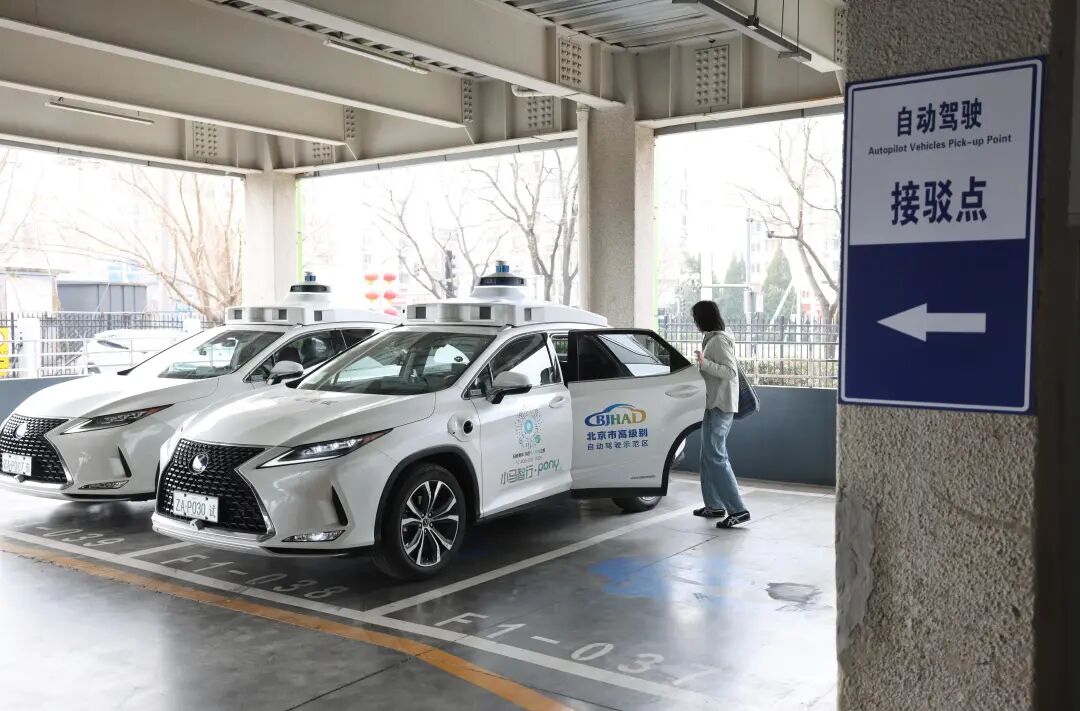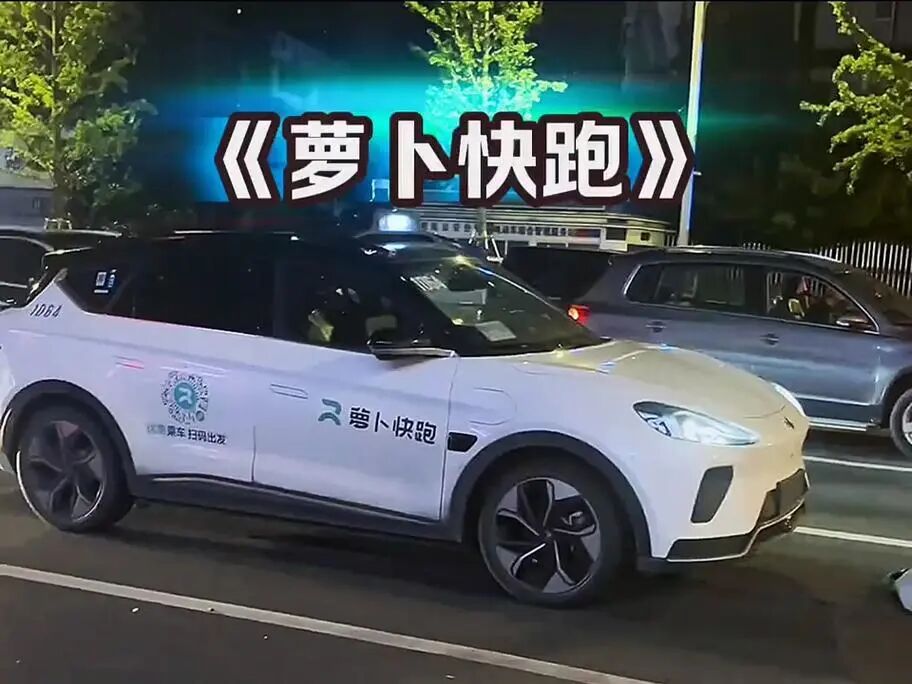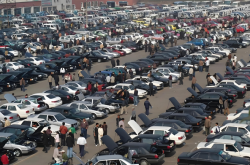Multi-wheel Drive Autonomous Driving Hits a Turning Point: Wuhan, Beijing, Shanghai, Guangzhou, Shenzhen, Hong Kong, Dubai, and Other Cities Abroad Push Forward. Apolo Go, Pony.ai, and WeRide Put on a
![]() 10/11 2025
10/11 2025
![]() 666
666
Introduction
Amidst the peak of the National Day return travel rush at Beijing South Railway Station, a white Robotaxi, proudly displaying the “Beijing High-Level Autonomous Driving Demonstration Zone” logo, smoothly pulled up in front of the parking building. The reporter simply tapped to open the door via a mobile app, sat in the back seat, entered the last four digits of their phone number, and the vehicle seamlessly merged into the bustling traffic flow!
— This isn't a scene plucked from a sci-fi movie; it's the everyday reality unfolding in 2025.
From the bustling commercial and residential streets of Hong Kong's Southern District to Dubai's expansive desert highways, from Wuhan's 3,800-kilometer test roads to Beijing's cutting-edge vehicle-road-cloud demonstration zone, Chinese autonomous driving is surging towards a critical juncture of large-scale deployment, with “policies clearing the path and technology accelerating the journey.”
Baidu Apolo Go, Pony.ai, and WeRide, the three titans of the industry, are competing fiercely on the same stage. Policies from over 50 cities are propelling Chinese autonomous driving from local pilot projects to the global market. This competition is not just about vying for a trillion-dollar industry; it's also a pivotal battle for the export of Chinese technological standards.

I. Policy “Ignition”: From Local Pilot Projects to Global Standard Exportation
The explosive growth of autonomous driving is inseparable from policy “ignition.”
In November 2024, Baidu Apolo Go secured Hong Kong's inaugural autonomous driving pilot license and subsequently expanded its test areas threefold, from the airport island to the bustling commercial and residential areas of the Southern District. Twenty sixth-generation right-hand drive autonomous vehicles have clocked 20,000 kilometers of safe operation around the clock.
Hong Kong Chief Executive John Lee explicitly stated in the 2025 Policy Address to “accelerate unmanned and large-scale operations,” sending a clear policy signal—this is not merely a technological breakthrough but also a strategic move to seize the global technological high ground.
Mainland cities are surging ahead even more rapidly.
Wuhan aspires to be the “world's first city for autonomous driving,” opening 3,800 kilometers of pilot roads spanning 14 administrative districts, attracting over 500 enterprises including Baidu and Dongfeng Yuexiang, and forming a closed loop of “research and development + testing + application.” In 2024, tech tourism accounted for 27% of its total.
Beijing has constructed the world's first vehicle-road-cloud integration demonstration zone, enhancing traffic efficiency by 15% at 257 intersections within a 600-square-kilometer area. The “Beijing Regulations on Autonomous Vehicles” clarify policy recognition across the Beijing-Tianjin-Hebei region, attracting 35 test vehicle companies and over 120 upstream and downstream enterprises.
Shanghai has launched the “Model Speed Smart Travel” plan, aiming to transport 6 million passengers in Level 4 autonomous vehicles by 2027.
Over 50 cities, including Shenzhen and Hangzhou, have introduced pilot policies, elevating autonomous driving from a “local experiment” to a “national strategy.”
Policy “nurturing” has rapidly expanded China's autonomous driving industry.
Goldman Sachs predicts that China's Robotaxi market size will reach $11.7 billion (approximately RMB 83.2 billion) by 2030, more than 200 times its size in 2025.
The Wuhan Economic Development Zone has amassed over 100 intelligent connected vehicle enterprises, spawning new business formats such as mobile platform operations and data services.
The Beijing demonstration zone has implemented eight major scenarios, driving the restructuring of the industrial chain value.
Policies are not just “boosters” but also “standard setters”—
As Chinese technology passes right-hand drive tests in Hong Kong and extreme environment certifications in Dubai, the balance of global autonomous driving standards is quietly tilting towards China.
II. Technological “Sprint”: From the Lab to the Global Stage
Policies pave the way, and technology takes the lead.
1. Baidu has been deeply cultivating autonomous driving for 12 years, ranking first globally in high-level patents on the Apollo platform. Its Level 4 safety test mileage exceeds 200 million kilometers, serving 14 million passengers cumulatively.
In Guangzhou, Wuhan, Beijing, and other locales, autonomous vehicles achieve a 99.99% accuracy rate in road condition recognition, outperforming humans in safety during severe weather. The accident rate of Apolo Go is 90% lower than that of humans.
More impressively, it is going international: In July 2025, it partnered with Uber to deploy thousands of autonomous vehicles in Asia and the Middle East.
In August, it teamed up with Lyft to enter Europe, launching services in the UK and Germany in 2026.
In the coming years, over 1,000 vehicles will be deployed in Dubai.
British Forbes magazine directly stated: Apolo Go is Google Waymo's core global competitor.

2. Pony.ai follows a “cost reduction and efficiency enhancement” route.
Its seventh-generation Robotaxi is equipped with 100% vehicle-grade components, reducing costs by 70% compared to the previous generation. It is the world's first system to achieve full-scenario Level 4 autonomous driving based on vehicle-grade chips.
Under 47°C high temperatures and 1,300W/㎡ illumination in Turpan, the entire autonomous driving system remains stable, easily handling Dubai's 50°C high temperatures and sandstorms.
In July 2025, Pony.ai initiated road tests in Dubai, planning to achieve fully unmanned commercialization by 2026, bringing “efficient and sustainable” travel options to Middle Eastern residents.
Pony.ai has already commercialized in Singapore.
3. WeRide focuses on “fully unmanned driving.”
In April 2025, it formed a strategic partnership with Uber and Dubai's RTA. In September, it defeated all competitors in the DWC Challenge, securing first place alongside Deutsche Bahn.
Its multi-sensor fusion solution maintains perception accuracy in sandy weather. The first batch of 50 Robotaxi GXR vehicles has landed in Dubai, with plans to deploy tens of thousands by 2030.
The three giants have different technological routes but a unified goal: to define global autonomous driving standards with Chinese solutions.
III. Overseas “Showdown”: From Technology Export to Standard Competition
The Middle East is China's “golden test ground” for autonomous driving.
The UAE and Saudi Arabia are promoting intelligent transportation as a “national strategy,” with Dubai aiming for “25% of travel to be autonomous by 2030.”
In terms of policies, the UAE not only opens road test licenses but also provides financial support—WeRide and Pony.ai have both received investments from the China-Arab Fund or Saudi sovereign funds.
In terms of infrastructure, Dubai's “Future City” plan aligns perfectly with autonomous driving: wide roads, low-density traffic, and high pedestrian-vehicle separation provide ideal scenarios for technological verification.
More critically, extreme climates like 50°C high temperatures and sandstorms pose rigorous durability tests, making it a “natural incubation base” for autonomous driving.
In September 2025, at the Dubai World Autonomous Transportation Summit (DATS), Apolo Go, WeRide, and Pony.ai made a collective appearance, securing licenses, signing major deals, and conducting test rides, crowning Dubai as the “world's most open Robotaxi test ground.”
Apolo Go obtained Test License 001, with the first batch of 50 vehicles conducting test rides at Jumeirah Beach and plans to deploy over 1,000 units.
WeRide signed a memorandum of cooperation with RTA to promote the construction of Dubai's autonomous driving demonstration zone.
Pony.ai showcased its seventh-generation Robotaxi and announced receiving road test approval.
The competition among the three giants in Dubai is essentially a “standard competition”—Dubai's RTA regulatory framework requires vehicles to pass three levels: closed road testing, open road verification, and safety assessment. Chinese companies' technological solutions (such as Apolo Go's “autonomous driving + large models,” WeRide's multi-sensor redundancy, and Pony.ai's vehicle-grade domain controllers) have received high recognition and may be exported to Egypt, Saudi Arabia, and globally in the future.
IV. Future “Victory”: From Scale Expansion to Ecosystem Reconstruction
2026 will be a pivotal year for autonomous driving in the Middle East.
Apolo Go, WeRide, and Pony.ai all plan to achieve fully unmanned commercial operations that year, with Dubai's streets witnessing a scenario where Robotaxis from three Chinese companies compete simultaneously.
The competition focuses on three areas:
First, fleet size. Scale effects determine market coverage. Whoever first captures the unmanned vehicle market cake will hold future dividends.
Second, localization adaptation. The Middle East's dense roundabouts, high-speed merges, high temperatures, sandstorms, and religious and cultural customs require “customized” technological solutions. Any oversight could lead to disasters.
Third, policy coordination. How to deeply integrate with RTA's regulatory framework and balance safety standards with commercialization speed is a practical challenge.
But an even grander vision is unfolding.
As Robotaxis in Beijing's Yizhuang achieve unmanned operations, as intelligent connected vehicle enterprises in Wuhan's Economic Development Zone spawn new business formats, and as Chinese autonomous vehicles steadily operate on Dubai's desert highways, the globalization story of Chinese autonomous driving is just beginning.
This competition is not just a technological contest among enterprises but also a crucial battle for the export of Chinese technological standards—those who set the standards win the world. Just as NVIDIA dominates AI chip standards and Huawei leads 5G standard formulation, Chinese autonomous driving is charging toward the pinnacle of global technological competition with a “policy + technology” dual-wheel drive.
In conclusion, the WeRide Coming (public account: WeRide Coming) believes:
Chinese autonomous driving in 2025 is no longer a “future concept” but a reality unfolding.
From Hong Kong to Dubai, from Beijing's Third Ring Road to desert highways, a smarter and more humanized travel revolution is accelerating.
As Robotaxis enter ordinary households and Chinese standards define global rules, the winners of this competition may not just be enterprises but the rise of the entire Chinese technology industry.
What do you think, dear?
#WeRideComing #AutonomousDriving #Self-Driving #DriverlessVehicles







